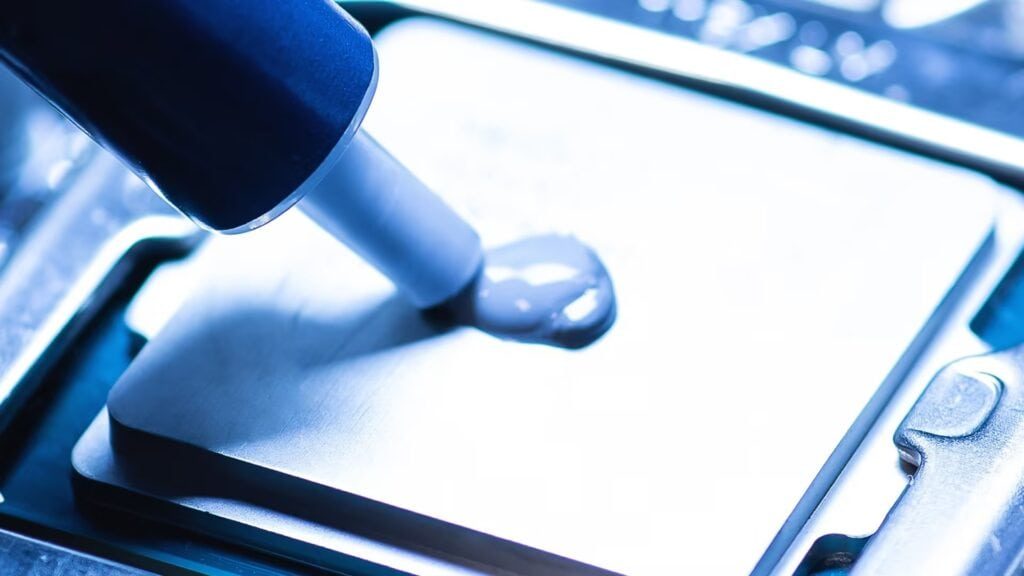3M has been one of the top-notch suppliers for thermal solutions but over time, it has been falling recently. Key reasons include 14-week lead times for 3M 8800 series,28% price surge on 3M TC-5200, and the PFAS litigation delaying new 3M products. Nonetheless, the buyers are at a loss because their business is slowing down because of 3M.
So, here we’ll discuss why it’s time to move on and how current buyers from 3M can easily switch to reliable new players in the game that’ll keep the business up and running like usual by dodging the 3M thermal material shortage. Let’s discuss PFAS-free alternatives to 3M in this article.
3M Thermal Interface Material Weaknesses (2025 Benchmark)
| Parameter | 3M 8926 | Industry 2025 Target |
|---|---|---|
| Thermal Conductivity | 5.2 W/mK | ≥7.5 W/mK |
| CTE Mismatch | 120 ppm/°C | <80 ppm/°C |
| ESG Compliance | PFAS traces | REACH/EPA PFAS-free |
Technical Proof
The 3M 8660 has been tested for use in the EV battery packs and the tests suggested that it kept failing when the battery temperatures spiked to 150 degrees Celsius. This is a major blunder in the product quality, which is completely unexpected from 3M and unacceptable by their buyers.
3M Products Vs. High-Performance Alternatives
Now that we’ve understood that 3M is failing at some point, it has given us an opening for the new entrants to give 3M’s buyers something new and innovative at a good price and quickly. For instance:
3M 8810 vs PTX-7000 Thermal Pads
Both these products were tested for 1,000hr aging @125℃ (ASTM D573). The results were as follows:
- 3M: 12% hardness drop, 5kV/mm (dielectric strength)
- PTX-7000: 3% hardness drop, 9kV/mm (dielectric strength)
3M TC-5200 vs GF-500T Gap Fillers
Now let is talk about the gap fillers that went through pump-out test conducted for 500 thermal cycles. After 500 thermal cycles (-40 degrees Celsius to 150 degrees Celsius), the results were as follows:
- 3M: 8% weight loss (suggests vibration-induced leakage)
- GF-500T: 0.2% loss (indicates thixotropic additive technology)
~ Once again, 3M was inferior to better alternatives.
Switching from 3M
After understanding that 3M has failed when tested for several inspections alongside its competitors, the next thing that the buyers would like to know is that how they can switch from 3M to a new alternative, that is safe, risk-free, cost-effective, and quick in terms of delivery. So here’s a 4-Step Risk-Mitigation Protocol that we’ve developed below:
- Material Mapping
Cross reference is where we test the material for acceptability and usability. Suppose we’ve chosen an alternative, say PTX-9000N and we want to compare it with a certain 3M product, say 3M 8926. We’ll inspect it through different tests that have pre-defined standards and protocols. Whichever is the victor, it’ll be deemed as a better material for our industry.
- Accelerated Qualification
The accelerated qualification is rather another testing method where we can use pre-existing data from 3M like UL/IEC reports. Then we will have to test the new alternative material through several tests and compare the test report with the one that we got from 3M (UL/IEC reports).
This comparison is a quick way to find out if the new alternative that we’ve targeted is suitable to replace the existing 3M product or not, and sources suggest that this way, we can speed up the validation part by up to 80%.
- Dual Sourcing
Dual sourcing is a strategic way of sourcing raw materials for your industry, where instead of relying on just 3M, you should buy the exact same material from a rather different and rather new supplier. Relying on one means you’re vulnerable to business slowdown that might arise if 3M fails to supply on time that has become their new normal lately.
Just make sure that the new supplier and their products are IATF 16949 compliant.
- Cost Reclamation
Scrap is what adds to the cost of procurements and 3M’s scrap rate has been over 3.5% no matter how nicely you impose optimisation techniques. So, we suggest that you prefer other alternatives who can offer you the same quality, same or better price, better delivery terms, but less scrap wastage.
In order to identify how much scrap you’re getting in each shipment, there are widgets like scrap reduction calculators, that will help you study how you can reduce your scrap wastage by opting for the alternatives to 3M supplier.
Ditching 3M for AI Server GPU Cooling: Case Study
Now, the case study below will explain precisely why exactly you need to ditch 3M for some new entries in the market that can offer thermal conductivity and cooling solutions for your industrial products.
Client
The client in this case study will be an Original Design Manufacturer (ODM) who falls under the top-tier. They produce high-performance computing platforms for NVIDIA H100 GPUs.
Understanding the Challenge
When the client tested the AI server’s GPU cooling unit, the temperature was beyond 105 degrees celsius. This thermal hotspot is usually located near high-power VRMs and memory modules, and high temperatures will not only affect the GPU and CPU but also memory modules, ultimately making the entire system vulnerable to irreversible damage.
Who was at the fault?
When further studies were conducted, they found that the 3M 8926 thermal interface pads were at the fault, whose thermal conductivity was merely 1.5 W/mk, which is not up to the mark for the GPU’s demanding thermal conduction.
Had these pads been performing better, the GPU temperature would not reach to the memory modules.
Solution
Some engineering solutions were suggested where the use of boron nitride-doped thermal pad felt the most preferred solution. The reason for using boron nitride-doped thermal pads was their 7.8 W/mk conductivity. Some salient features of these pads include:
- Ceramic-enhanced matrix
- Mechanical compliance, ideal for uneven GPU substrate regions.
In order to make the theory more legitimate, they tested the pads on DVT (Design Verification Test) in 5 GPUs.
Results
The following results were observed in this practical test:
- The temperature was able to drop by over 23 degrees Celsius.
- There was no more need for copper shims and secondary thermal solutions.
- A whopping $182,000 per annum saving became a reality since the client could avoid the constantly rising cost of 3M pads. The procurement and returns costs could be eliminated completely since they stopped buying from 3M, hence suggesting it to be great alternatives to 3M thermal pads.
Future-Proofing Your Supply Chain Against 3M Dependency
There’s no harm if you’ve been dependent on 3M. You have two choices- either you can switch to an alternative completely, or you can first dual source, and then switch to the alternate supplier gradually. We’ve developed a plan to future-proof your supply chain against 3M dependency over time.
- 3D-Printed TIMs
Switch to the 3D printed Thermal Interface Materials, that are manufactured with specialised and customised technologies. Some salient features include:
- They’re 3D printed, so custom designs can be made and crafted using 3D printers.
- Due to the possibility of heavy customization, the material composition can be adjusted according to the client requirements.
- There’s always a possibility of rapid development because of the quick modifications that also suggest faster delivery times, which is the key reason why you’re ditching 3M in the first place.
- Blockchain Tracking
The 3M has always followed an opaque supply chain, where you never know what materials they’re using, where they’re buying them from, and you have no role in customising the products.
There’s a concept of blockchain tracking, where you can see how the raw materials are being moved across the entire supply chain. It’s one of the most secure, transparent, and foolproof way of keeping the supply chain known to you. While it’s not possible with 3M to do blockchain tracking, if you prefer some alternate suppliers, perhaps they will be happy to assist you with monitoring the movement of raw materials.
- AI-Driven Selection
It’s high time that we start using AI in thermal needs. AI can not only give you, but also use extremely complex algorithms that will understand your thermal needs and suggest the most suitable type of thermal solution like what material should be used in the thermal pad, its thickness, whether you should go for thermal pads, gels, or something else. All it asks is for proper inputs and prompts, and the AI will give you proper thermal solutions.
We call it AI-driven thermal solutions, which is still far from reality in 3M, which leads to issues like 3M PFAS-free replacement from their buyers.
Conclusion
The 3M thermal material lead time is high most of the times and has become a new normal. Now, this has given new players an opening to come up with shorter lead times, fast deliveries, better pricing, and better thermal conductivity with the help of new and innovative materials, and technologies.
With that being said, Jiujutech is among those alternatives to 3M, who will check mark all the above criteria that you should ideally be looking for in a thermal pads provider. Whether its EV battery industry, IT industry, or any other, Jiujutech will provide some of the most versatile thermal solutions that will be perfectly applicable to your industry.





